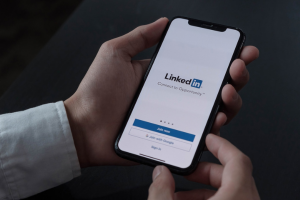Social media such as LinkedIn, Instagram and TikTok have not only become a central component in everyday communication, but have also long since arrived in IR work. A 2020 study by US business consultancy Greenwich Associates found that nearly 80 percent of all institutional investors use social media as part of their regular daily routine. Around 30 percent of respondents said that information received via social media has a direct impact on their investment decisions or recommendations.
A similar assessment is made by a survey of financial professionals conducted by DVFA and IR Club in the fourth quarter of 2021. 71 percent of respondents expect social media to be increasingly important when it comes to information on IR topics. 71% see LinkedIn as the most important social media channel. 44 percent take things one step further and give platforms such as LinkedIn at least equivalent importance as a source of information to traditional print and online media.
In order to get younger target groups excited about their own shares in particular, new formats and new content in the social media channels and here primarily at LinkedIn occupy an increasingly larger space in companies’ IR work. Those who do not yet have social media specialists in the PR or IR department will probably find what they are looking for in the marketing or HR teams. Two options are available, depending on budget and company size. The IR departments can start their own corporate podcast or act as a guest on a third-party podcast – in addition to monthly or quarterly newsletters, which are published electronically.
Whichever variant you choose, coherence is important. Ideally, fresh IR content should be posted at least once a week. Someone who only sporadically seeks connections via LinkedIn is suggesting to users that they have little to share or – even worse – that their online platform only runs as a “sidekick” to their conventional communication vehicles.
LinkedIn offers an opportunity to ensure more interaction with the users. Personalised content plays a central role here. Videos in which the CEO, but also the Head of IR, talk about their work, create more interaction with the users in the sense of an emotional dimension. The main goal is not to generate as many likes as possible, but to bind the target groups to the company, its products and brands and, of course, to the stock as an investment. Via LinkedIn, finance departments in turn get the opportunity to collect real-time feedback on their image in the financial community.
In order to establish a regular contact, the message must be correct. Younger investors want to consume ever shorter and faster content. In other words: short and concise messages, along with fewer technical terms from the financial world, are an absolute must for the equity story to come across in a gripping and compact way. For this purpose, contributions should be kept short: in the single-digit minute range.
Suitable formats include videos and video excerpts from live interviews or company events, individual slides from company presentations with the most important key figures, infographics on current topics, but also the most commented-upon press articles and blog posts about the company. The choice of which of these formats to use is based on the content. Here, the IR departments have a wide range of options: classic communication of financial results; sustainability topics, which are becoming ever more important; comments from the Executive Board relevant to the capital market; background information on IR-relevant events such as general meetings and conferences; and soft news such as the introduction of new members in the IR team.
IR departments that are still in the process of building up their social media activities via LinkedIn are facing a lot of new territory. At the same time, they must be aware of one thing: If you are not there as a company, where the investors of tomorrow are, you are no longer perceived by them as a source of information. This task is then taken over by external influencers and social media channels.


